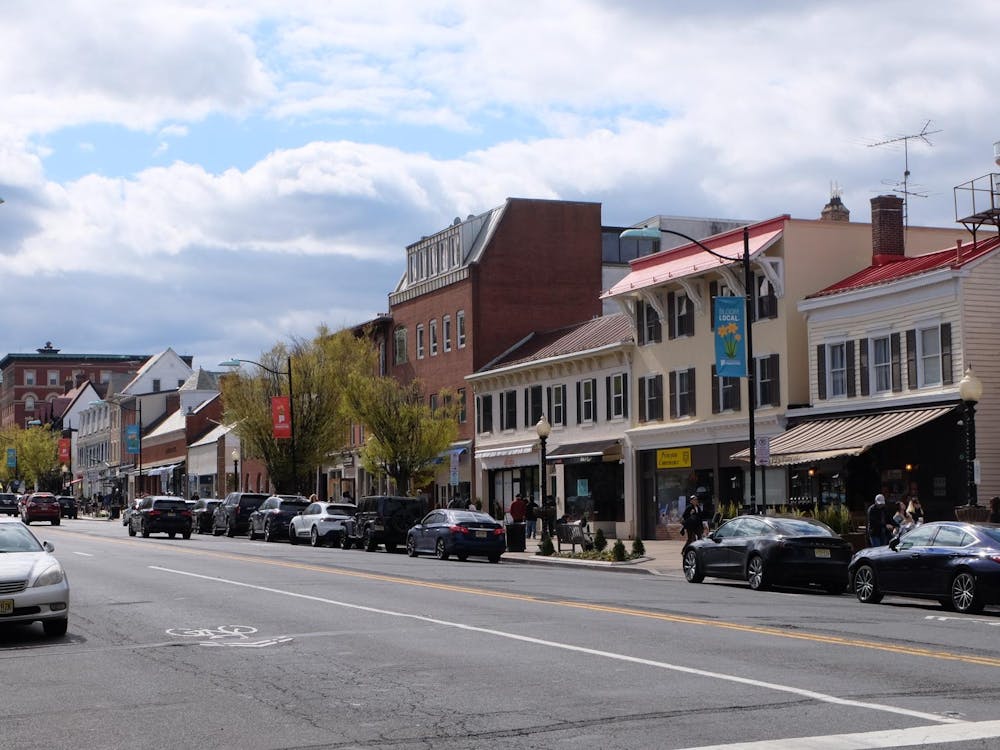Most Princeton students have heard of the Breakout Princeton Civic Action Trips organized by the Pace Center for Civic Engagement. Known on campus as Breakout Trips, the trips take place during fall and spring break, though planning for the trips start months earlier. Many Princeton students noted that, while the trips are good learning experiences, they are also a significant time commitment and are by no means a relaxing way to spend fall break — particularly for trip organizers.
Trip leaders spend 10-15 hours a week preparing for the trip for several months leading up to fall and spring break. Fall trip applications are due in April, and spring trip applications are due in December. Andrew Nurkin, Senior Program Coordinator at the Pace Center and liaison for the Breakout program, said in an email that leader preparation included “weekly check-in meetings, a leader training session, contacting and corresponding with community partners, holding pre-trip meetings with the trip group and the many logistical items that go into creating and implementing a compelling Breakout itinerary.”
Eric Donado ’13, who led a fall trip to New Orleans focusing on social entrepreneurship, equated his time commitment during Breakout preparations to the workload for another academic course. Other trip leaders said that planning a trip outside of Princeton’s campus can be a challenge.
“People off campus were harder to reach,” Adoley Ammah-Tagoe ’14 said in an email. Ammah-Tagoe organized a spring trip last year. “For many organizations, if we didn’t have a personal contact it was difficult to convince anyone in the office that speaking to our group was worth an hour of their day.”
Ammah-Tagoe, who led a trip as a freshman, also described the challenges she faced leading a group where the majority of the participants were her age or older.
“Being in charge of their well-being, their promptness and their happiness for a week was unexpectedly difficult,” she explained.
But participants and leaders alike praised the program as an opportunity to leave the Orange Bubble and lend a fresh perspective to their academic pursuits on campus. The Pace Center calls the trips “week-long opportunities to learn about and take action on complex public issues through community immersion, direct service, group discussions and reflection activities,” according to its website.
“You remember why you’re studying the things you’re studying here at Princeton,” Shaina Watrous ’14 said. Watrous participated in the fall 2011 trip Female Incarceration in Oklahoma.
For some participants, the Breakout Trip acts as an extension of their existing interests. Watrous, who volunteers with the Pace Center’s Petey Greene Prisoners Assistance Program, noted that others on her trip had previous experience with the issues addressed during the trip. Donado’s social-entrepreneurship focus was also in line with his academic interests, he said, and was directly inspired by a class he took last fall, EGR 495: Special Topics in Entrepreneurship — Ventures To Address Global Challenges with John Danner.
Meanwhile, other students said they used the trips to venture outside their comfort zones. Trap Yates ’14, a participant on Donado’s trip, said he had little experience with social entrepreneurship before Breakout and was considering a major in comparative literature or classics prior to the trip.
He is now thinking seriously about a major in politics and a certificate in urban studies.
The program has faced some criticisms because of the arguably low impact the trips have on the actual social causes they address. While service is an important component of every trip, it is not the trips’ only focus: Participants interact with local academics, business people, community leaders and individuals to better understand the issue, not necessarily to impart immediate change. Participants said they recognized the limitations of a week-long program.

“It’s tough to invest yourself wholeheartedly in something for seven days and then drop it all together,” Donado said.
Watrous agreed, noting that he had wondered, “How can you really do a lot in a week?”
“But the point is not that you’re going to go in there and solve the problem in the week,” he said.
The Pace Center has addressed this concern by spearheading a paid internship program to encourage Breakout participants to return to the site of their trip. The Center offered funding for three students to do summer work related to their Breakout Trips last year; this year, it hopes to offer more funding for similar initiatives.
“We hope this will be an opportunity for some Breakout participants to continue their work in a new capacity,” Nurkin said in an email.
But regardless of these criticisms, participants and leaders generally spoke about their trips with passion and excitement.
“Because of Breakout, I have a better sense of what I want to do with my career and my life,” Ammah-Tagoe said.







